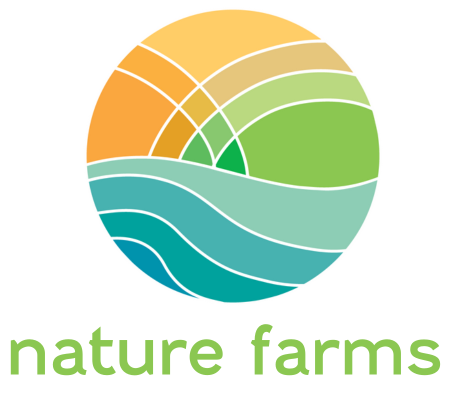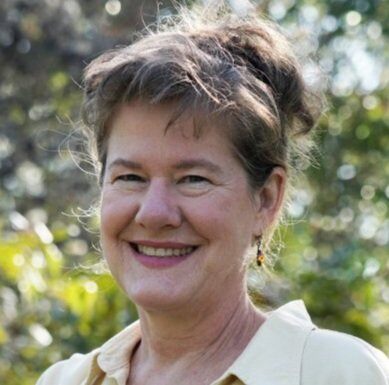
The new project! You might wonder why we would start a new project when we have not broken ground on the first one, Nature Towns, yet. We see Nature Farms as a stepping stone to Nature Towns, a way to prove the concept of community financing on a smaller scale - and on a matter of vital importance - before jumping into town development.
One of the driving forces behind the Nature Towns idea has always been food. Patrick and I are passionate about food: its nutrition, flavor, cost, availability, and environmental impact. In an ideal world, I would have fed my children only organic, regenerative, grassfed everything. But that’s not always available, and it’s often unaffordable for many of us.
Production
Production of our food - aka agriculture - has a profound impact not just on us, but on nature as well, affecting human and planetary health. Toxins applied to crops end up in our bodies and waterways, causing problems ranging from non-Hodgkins lymphoma to a dead zone the size of New Jersey in the Gulf of Mexico.
About 53% of US land is used for agricultural purposes, giving us an enormous opportunity for improvement: Regenerative agriculture produces more nutritious food while sequestering carbon and improving local ecosystem health.
If industrial ag has a driving philosophy, it is to produce maximum yields at the lowest possible price. The unintended consequence has been poor nutrition. Health of humans and the environment has never been the goal.
Synthetic fertilizers, pesticides and herbicides seemingly worked miracles for a time. But we got quantity at the expense of quality. Today about 96,000,000 acres of land in the USA produce corn; approx. 94% of this is genetically modified. And about 99% of the crop is field corn for livestock or cars, in the form of ethanol.
According to the Non-GMO Project, “The small amount of field corn that ends up in food for humans is processed into recognizable ingredients such as corn starch or corn syrup, or hard-to-spot derivatives such as citric acid, cellulose, maltodextrin, flavorings and some vitamins.” These corn derivatives are a big part of ultra-processed foods (UPF).
We seem these days to have more choices than ever before - but not always the choice for good food. A recent study concludes that “73% of the U.S. food supply is ultra-processed and suggests that ultra-processed foods are 52% cheaper than less processed alternatives…”
Clearly, people on a tighter budget are more likely to buy UPF. And the more UPF consumed, the lower the health outcomes.
Land Use
There are numerous reasons why the “free market” does not produce sufficient local food of high quality. There’s a big mismatch between what is grown here and what people want and need to eat.
Last week I mentioned the problem of local food insufficiency: Only 0.06% of the food consumed in Travis County is actually produced in Travis County on our cumulative 200,000 acres of farmland.
A large portion of the farmland here (128,000 ac) is pastureland, which in Texas can mean open land on which just enough cows graze to merit an agricultural exemption on property taxes (east of I-35 in Travis County, this would be 4 cows on 12 acres).
The top crop in Travis County is corn for grain, consuming almost 19,000 acres, followed by forage at 16,000 ac. Neither of these is human food, and it’s hard to know what proportion even goes to feed livestock to feed people: horses also eat hay, and corn might be used as deer feed.
Also significant is the fact that we are losing farmland across the nation, about 2000 acres daily. That’s an area more than double the size of our old airport, now the Mueller neighborhood, home to ~7000 people. It’s a substantial amount of land, adding up to about 1140 square miles per year. We consider this loss of farmland to be an urgent matter of national security that isn’t being discussed much, and it’s happening in Travis County as well.
Nature Farms is our first step toward producing more and better local food and preserving at-risk farmland. Rapidly growing urban areas like the Austin MSA suffer the problem of city-proximate farmland being sold for development of suburbs, roads and shopping malls.
Farming has never been known as a “get rich quick” scheme; it’s more likely to put a farmer into debt. So farmers fund their retirement by selling their land to the highest bidder, which often means it goes for speculation/development. Although there are younger people who wish to begin farming, the high prices make land unobtainable. Farms - and young farmers - move farther and farther away from the urban core.
Our Solution
Nature Farms, our solution to these economic problems in farming, is to build public-private partnerships using community financing. When community members collaborate to purchase and own land by leveraging their residential properties’ values to obtain bonds (through property tax financing), the land can be preserved in perpetuity. This is one way to guard against food inflation. Further, new farmers do not need millions of dollars to purchase farmland; they only need to operate it.
Nature Farms will operate land in a regenerative manner, improving the nutrient density of food and the local ecosystem. The US EPA estimates that agriculture is responsible for 10% of our greenhouse gas emissions. Regenerative agriculture practices can turn that number around by eliminating the bad emissions and going further by sequestering carbon in the soil.
.png?width=400&height=200&name=Holocia%20hz%20(400%20x%20200%20px).png)
